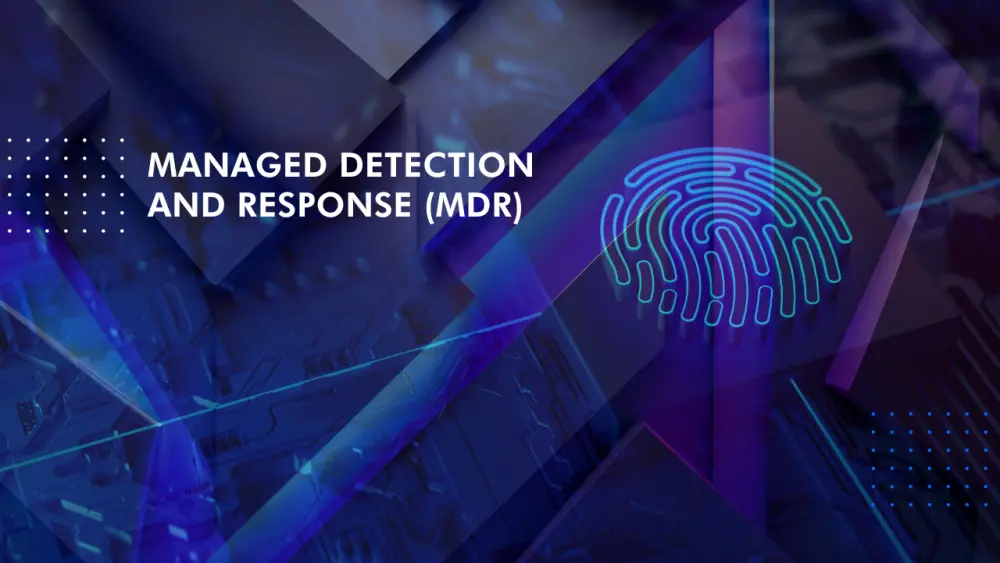2023 Cybersecurity Review
As we examine the 2023 Cyber Security Review, it becomes clear that the year presented significant challenges and advancements in cybersecurity. From complex ransomware attacks to the adoption of AI-based defenses, both organizations and individuals had to quickly adjust to the changing landscape of cyber threats. This article offers a detailed summary of the important events, patterns, and approaches that characterized each month in 2023, along with recommendations for bolstering cybersecurity defenses with DataGuard’s innovative solutions.
January: Ransomware Surge Spurs Global Security Reevaluation
The year began with a surge in ransomware attacks targeting critical infrastructure, prompting governments worldwide to reevaluate their cybersecurity policies. Companies invested heavily in threat intelligence and incident response capabilities, recognizing the need for proactive defense measures.
February: Supply Chain Security Gains Prominence
In February, the focus shifted to supply chain security, as several high-profile breaches exposed vulnerabilities in third-party vendors. Organizations began implementing stricter vendor risk management protocols and conducting regular security audits to mitigate risks.
March: Data Privacy Regulations Drive Compliance
Amid growing concerns over data privacy, March saw the introduction of new regulations aimed at enhancing consumer protection. Companies scrambled to comply with the stringent requirements of laws like the California Privacy Rights Act (CPRA) and the European Union’s General Data Protection Regulation (GDPR).
April: New Malware Challenges Heighten Vigilance
The emergence of new malware strains and phishing tactics kept cybersecurity professionals on high alert in April. Training programs and simulations became more prevalent as organizations sought to bolster their employees’ awareness of cyber threats.
May: Cloud Security in Remote Work
In May, the spotlight was on cloud security, with many organizations transitioning to remote work environments. Cloud security tools and services experienced a surge in demand, prompting providers to enhance their offerings to meet the evolving needs of customers.
June: Cybercriminals Target Industries
As the halfway point of the year approached, cybercriminals ramped up their efforts, targeting industries such as healthcare and finance. Organizations responded by investing in advanced threat detection technologies and conducting regular penetration testing to identify and mitigate vulnerabilities.
July: Summer’s Data Breach Wake-Up Call
The summer months brought a wave of data breaches, prompting calls for greater collaboration among cybersecurity professionals. Information sharing platforms and threat intelligence exchanges gained popularity as organizations sought to stay ahead of emerging threats.

August: AI’s Role in Cybersecurity Spotlight
In August, the focus shifted to the role of artificial intelligence (AI) in cybersecurity. AI-powered tools proved instrumental in detecting and mitigating threats, leading to increased adoption across industries.
September: Rising Cyber Attack Sophistication
The growing sophistication of cyberattacks was evident in September, with ransomware gangs adopting more complex tactics. Organizations began implementing zero-trust architectures and multi-factor authentication to protect against these advanced threats.
October: Incident Response and Recovery
In October, the emphasis was on incident response and recovery, as organizations grappled with the aftermath of cyberattacks. Cyber insurance policies have become more prevalent, providing financial protection against the escalating costs of data breaches.
November: Demand for Cybersecurity Experts
As the year ended, the need for skilled cybersecurity professionals became more pronounced. Training programs and certifications were in high demand, as organizations sought to build a robust security workforce capable of addressing emerging threats.
December: Year-end Cybersecurity Highlights and Outlook
The year ended on a high note, with several significant cybersecurity developments, including the launch of new security frameworks and the release of innovative security tools. Looking ahead to 2024, cybersecurity experts anticipate a continued focus on threat intelligence, AI-driven defenses, and regulatory compliance.
FAQs about the 2023 Cyber Security Review
What is the 2023 Cyber Security Review?
The 2023 Cyber Security Review is a comprehensive analysis of cybersecurity events that occurred throughout the year. It provides insights into key trends, notable incidents, and lessons learned in the cybersecurity landscape.
What are the main highlights of the 2023 Cyber Security Review?
Some key highlights include the rise of ransomware attacks, supply chain vulnerabilities, the impact of emerging technologies, and the importance of cybersecurity education and training.
How can the 2023 Cyber Security Review benefit individuals and organizations?
The review can help individuals and organizations stay informed about cybersecurity threats and trends, enabling them to better protect themselves against cyberattacks. It also provides valuable insights for improving cybersecurity strategies and practices.
What are some of the key lessons learned from the 2023 Cyber Security Review?
Some key lessons include the importance of implementing robust security measures, staying vigilant against evolving threats, and investing in cybersecurity awareness and education. Additionally, the review highlights the need for organizations to prioritize data protection and secure their supply chains.
How does the 2023 Cyber Security Review address emerging technologies?
The review discusses the impact of emerging technologies such as AI and IoT on cybersecurity. It highlights the benefits and challenges associated with these technologies and provides recommendations for securing them.
What are some recommendations provided in the 2023 Cyber Security Review?
The review recommends implementing multi-layered security defenses, conducting regular security audits and assessments, and investing in cybersecurity training and awareness programs. It also emphasizes the importance of collaborating with industry peers and sharing threat intelligence.
Conclusion
In conclusion, the 2023 Cyber Security Review underscores the challenges and opportunities that have influenced the cybersecurity landscape throughout the preceding year. From the escalation of ransomware assaults to the increasing significance of AI in cybersecurity, organizations are urged to maintain vigilance and proactivity against evolving threats. Through the adoption of resilient security tactics and staying updated on current trends, they can enhance the protection of their data and networks in an ever-expanding digital realm.
In light of the insights gleaned from the 2023 Cyber Security Review, organizations can benefit from leveraging DataGuard’s comprehensive cybersecurity solutions. Services such as the Guardian Absolute Program, Managed Detection and Response (MDR), and Continuous Vulnerability Scanning can help organizations strengthen their security posture and mitigate the risks highlighted in the review. Additionally, DataGuard’s Managed Security Awareness Training can enhance employee awareness and readiness to combat evolving cyber threats. By partnering with DataGuard, organizations can proactively address the challenges identified in the Cyber Security Review and safeguard their digital assets effectively.
Back to Articles/Blog



